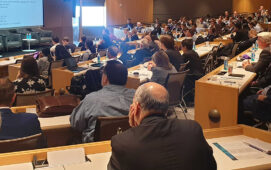
Suitability is a hot topic – and an increasingly tricky one. The FCA suitability requirement (COBS 9), an obligation for all wealth managers in the UK, is relatively new in both the UK and wider Europe, and the existence of MiFID II has only served to further confuse the situation. As regulatory bodies around the world step up enforcement of investment suitability regulations to ensure firms and advisors are properly managing investor wealth, how are evolving trends in suitability requirements impacting the way in which firms handle their technology requirements?
“Suitability is pretty much a universally held objective of virtually every regulator,” points out Paul DiBlasi, Director of Product Marketing for NICE Actimize’s compliance business. “It is a global requirement, to ensure investment recommendations are accurate, which is usually determined largely by the KYC information acquired when a customer is onboarded.”
So far, so easy. But where wealth managers traditionally based suitability on the account level (looking at account X, Y, Z and making sure the recommendations are appropriate for that risk outlook and horizon), firms are increasingly recognising that one individual can have multiple accounts – along with family accounts, spousal accounts and so on. This has led to a trend whereby advisors are looking at the management of suitability at a household or overall client level, rather than at the individual account level.
“What firms want to be able to do is optimise portfolio performance,” explains DiBlasi. “And they have a better opportunity to minimise risk at a household level, optimising a portfolio of performance, providing value-added services, generating additional discounts on sales commission, and so on.”
Yet although risk assessment at a household level might be commercially appealing, many firms are still using burdensome legacy technology that simply cannot handle aggregating and assessing risk on multiple accounts – which could have material implications for their bottom line. While a household approach might be attractive from a suitability perspective, it inevitably places a greater burden on compliance, as the entire account approach has to be realigned.
The first step is to create this theoretical ‘household’ through an aggregation of accounts – which throws up challenges such as how to identify and validate this consolidated data.
“That can be a challenge, as a lot of vendor solutions do not have that flexibility, and often only support one particular structure,” explains DiBlasi.
Then, the system must be able to run the required analytics and generate alerts at a household level – another complexity, as many of the current legacy systems are set up to look exclusively at account level issues.
Finally, the aggregated household accounts must be mapped into a new entity, with new thresholds and new checks and balances for reporting purposes – such as risk tolerance, asset allocation and time horizon.
NICE Actimize recently enhanced its Sales Practices & Suitability solution with new flexible client review models and investigative tools to help firms align their compliance programs to achieve exactly that. Using the new solution, FSOs first determine the householding structure that best meets their business needs, and then map those structures to the client review model. The system then automatically finds connected accounts and compiles accurate investment profiles for households in seconds. Analytics are run at the household level and alerts are generated when risk thresholds are breached.
“While assessing client risk holistically at the household level is an increasingly popular method for managing wealth, it’s not without challenges,” says Executive Vice-President Chris Wooten. “Today, most compliance operations struggle to see the complete picture of a client’s holdings because their legacy technology cannot link, aggregate and analyse accounts at the household level. Firms also have to rely on analysts to manually pull and correlate data from different systems, which is costly, cumbersome, error-prone and risky. Or they resort to expensive in-house solutions which fall short of the mark.”
Regulation around suitability requirements is also becoming increasingly complex. EU firms are subject to MiFID II regulations around suitability and appropriateness, but country-specific suitability requirements are also growing more rigorous, and these can supersede MiFID II, focusing on areas such as solicitation, sales, marketing of financial services, consumer protection, distance selling and more. So firms are trapped in a dynamic where they are subject to both pan-European and local regulation, which can be onerous.
A loophole has emerged, however, for advisors outside of the EU, which in theory gives them an avenue for avoiding both local and EU regulations entirely due to a relatively loose concept called ‘reverse solicitation’. This means that a non-EU investment advisor, doing business with an EU-based investor, can avoid being subject to EU regulations as long as the contact is first initiated by the client – even though the client is protected by local and EU regulations.
“In a situation like this, essentially, all bets are off,” warns DiBlasi. “You are no longer necessarily covered by EU or local regulations, as long as the advisor can demonstrate to supervisory authorities that you initiated the contact without the firm’s inducement.”
That can be hard to prove, however – and in a dispute, can come down to a ‘he-said, she-said’ scenario – making technology solutions that monitor and record communications all the more important. “Integrated communications and surveillance monitoring are crucial in these situations in order to protect firms from potential regulatory action, whether local or cross-border,” points out DiBlasi.
“With challenges such as these, legacy systems are often simply not enough to meet these new requirements. Suitability is a multi-headed beast, and firms need to adapt and upgrade their technology to meet these evolving demands.”
Subscribe to our newsletter




